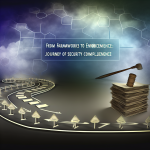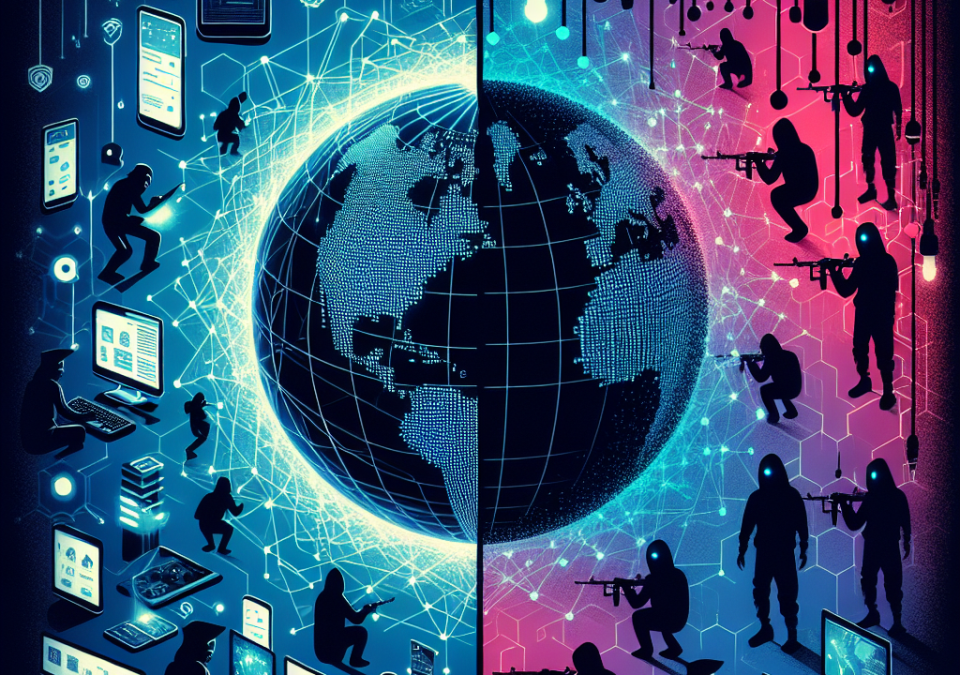
From Frameworks to Enforcement: The Journey of Security Compliance
July 22, 2025
Building a Culture of Security Compliance: Strategies for Success
July 23, 2025
In today’s digital landscape, the interconnectivity of devices, networks, and systems is at an all-time high. The Internet of Things (IoT), smart cities, and digital ecosystems have transformed our daily lives, from how we conduct business to how we communicate. However, with this hyper-connectivity comes an array of potential threats that organizations and individuals must navigate to safeguard their information and privacy. As we look to the future, understanding these emerging threats will be crucial for developing robust cybersecurity strategies.
The Evolution of Cyber Threats
Cyber threats are not a new phenomenon; however, their complexity and sophistication have evolved dramatically. Attackers are increasingly utilizing artificial intelligence (AI) and machine learning (ML) to execute sophisticated cyber operations. The growth of cloud computing and decentralized systems has also expanded the attack surface, presenting new vulnerabilities that malicious actors can exploit.
1. Advanced Persistent Threats (APTs)
APTs are prolonged and targeted cyberattacks typically orchestrated by well-funded adversaries, such as state-sponsored groups. These attackers often take the time to infiltrate a network stealthily and linger undetected for extended periods. As organizations become more aware of traditional attacks, adversaries will continue to innovate, employing new tactics to avoid detection. The future will see an increased use of APTs as attackers target critical infrastructure, sensitive government data, and large corporations.
2. Ransomware Evolution
Ransomware has evolved from simple encryption of files to complex, multi-layered attacks that may include data theft and extortion. Ransomware-as-a-Service (RaaS) models are becoming commonplace, enabling even non-technical criminals to engage in cyber extortion. With the rise in cryptocurrency transactions, it has become easier for criminals to receive ransom payments while remaining anonymous. Enterprises must prepare for the potential of data leaks, leading to reputational damage and financial loss, even if they pay the ransom.
3. IoT Vulnerabilities
The proliferation of IoT devices is revolutionizing everything from healthcare to urban planning. However, these devices often lack robust security measures, making them prime targets for cybercriminals. A compromised IoT device can serve as an entry point into larger networks, amplifying the threat by allowing lateral movement through systems. Future strategies must include securing IoT ecosystems and ensuring updates and patches are implemented regularly.
4. Supply Chain Attacks
Recent incidents underscore the vulnerabilities present within supply chains. Attackers are leveraging third-party software and service providers to gain access to larger organizations. As companies increasingly rely on a network of vendors, the risk of security weaknesses propagating through these connections grows. Businesses must prioritize supply chain security, implementing stringent vetting processes and monitoring systems for potential threats.
5. Deepfakes and Social Engineering
The rise of deepfake technology presents a unique threat, making it easier to create deceptive content that can mislead individuals and organizations. This capability can be exploited in social engineering attacks, where perpetrators manipulate victims into divulging sensitive information or authorizing transactions. Education and training will be essential to equip individuals to recognize such threats and respond appropriately.
Building a Resilient Cybersecurity Posture
Addressing these emerging threats requires a multi-faceted approach that combines technology, policy, and human factors. Organizations should consider the following strategies:
-
Zero Trust Architecture: Adopting a Zero Trust model—the principle of “never trust, always verify”—ensures that only authenticated and authorized users can access systems and data, minimizing the attack surface.
-
Continuous Monitoring and Threat Intelligence: Implementing advanced monitoring systems to detect anomalous behavior will help identify and mitigate threats before they can escalate.
-
Comprehensive Employee Training: Investing in security awareness programs can empower employees to recognize phishing attempts, social engineering tactics, and suspicious activities.
-
Incident Response Plan: A robust incident response plan that is regularly tested and updated will ensure that organizations can react swiftly to mitigate the impact of a potential breach.
- Collaboration and Information Sharing: Engaging in cross-industry sharing of threat intelligence can enhance collective defense mechanisms and drive innovation in cybersecurity solutions.
Conclusion
As we move further into an era of hyper-connectivity, the cybersecurity landscape will continue to evolve. While the threats may become more sophisticated, our understanding and capacity to respond must also advance. By fostering a culture of security awareness, investing in technology, and collaborating across sectors, organizations can prepare themselves for the challenges that lie ahead in this rapidly changing digital environment. In a world where the line between physical and virtual security is increasingly blurred, proactive measures will be the cornerstone of resilience against emerging threats.







